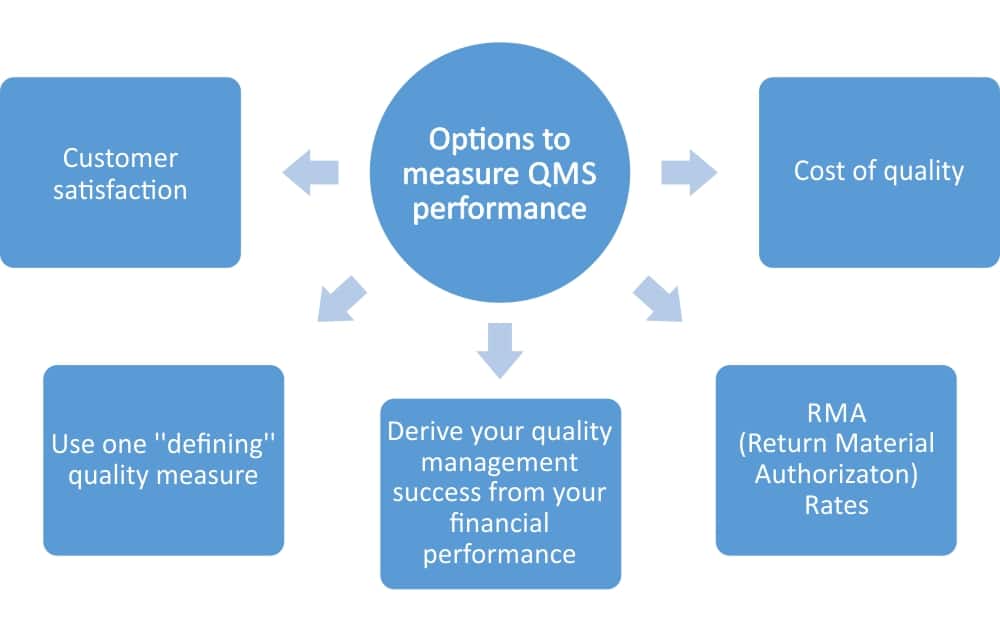 John Nolan
John Nolan
August 29, 2017
Most companies who have a QMS (Quality Management System) certified according to ISO 9004 or ISO 9001:2015 are accustomed to performing against set objectives and KPIs (key performance indicators), and also demonstrating continual improvement, which we examined in the article ISO 9001 – Where does quality management fit into your organization? But, how can the QMS itself, and its effectiveness, be measured, and is there any one method of doing this that will provide an organization’s top management with one true indicator of QMS performance?
Section 9.1.1 of the ISO 9001:2015 standard suggests that “the organization shall evaluate the performance and the effectiveness of the quality management system.” While this is not prescriptive in terms of measuring the QMS by one true indicator, most top management teams prefer that one true measure is established to ascertain the effectiveness of the system, as well as whether month-on-month improvement – and value for money – are attained. You can find more details on this from the article Monitoring and measurement: The basis for evidence-based decisions. So, if you are a quality professional given that task, where do you begin, and what criteria should you consider?
There have been many opinions over the years on how quality is best measured, particularly in manufacturing processes, although with the increase in service industries in recent years this has also become a point of discussion there. Manufacturing organizations traditionally may like to use measures such as “defects per million opportunities,” while a service organization may choose to measure customer satisfaction via a survey. Each organization must decide what is most important to it, but let us consider some of the options available to measure QMS performance:

Every organization must decide what works best for them, but personally, I like to measure the “cost of quality” as a primary QMS specifically for a manufacturing organization, supported by all the other options above measured at a secondary level. You can refer to the article Analysis of data obtained from Monitoring and Measurement to help here, too. That way, the true “cost of quality” can be presented to top management in dollar form, which usually gives the incentive to drive initiatives from a strategic level. At a secondary level, using elements such as customer feedback, internal test fails, and RMA analysis will help you to improve your “cost of quality,” while also protecting your customers and improving the processes that design and deliver your product. In this way, you can ensure continual improvement, customer satisfaction, and improved product design – all elements that validate good QMS performance – and your board of directors can be satisfied that they have one “true” measure that informs them as to how the QMS is performing, and can be easily used to ascertain if continual improvement is occurring.
Use this free online training ISO 9001:2015 Foundations course to learn more about the measurement requirements.